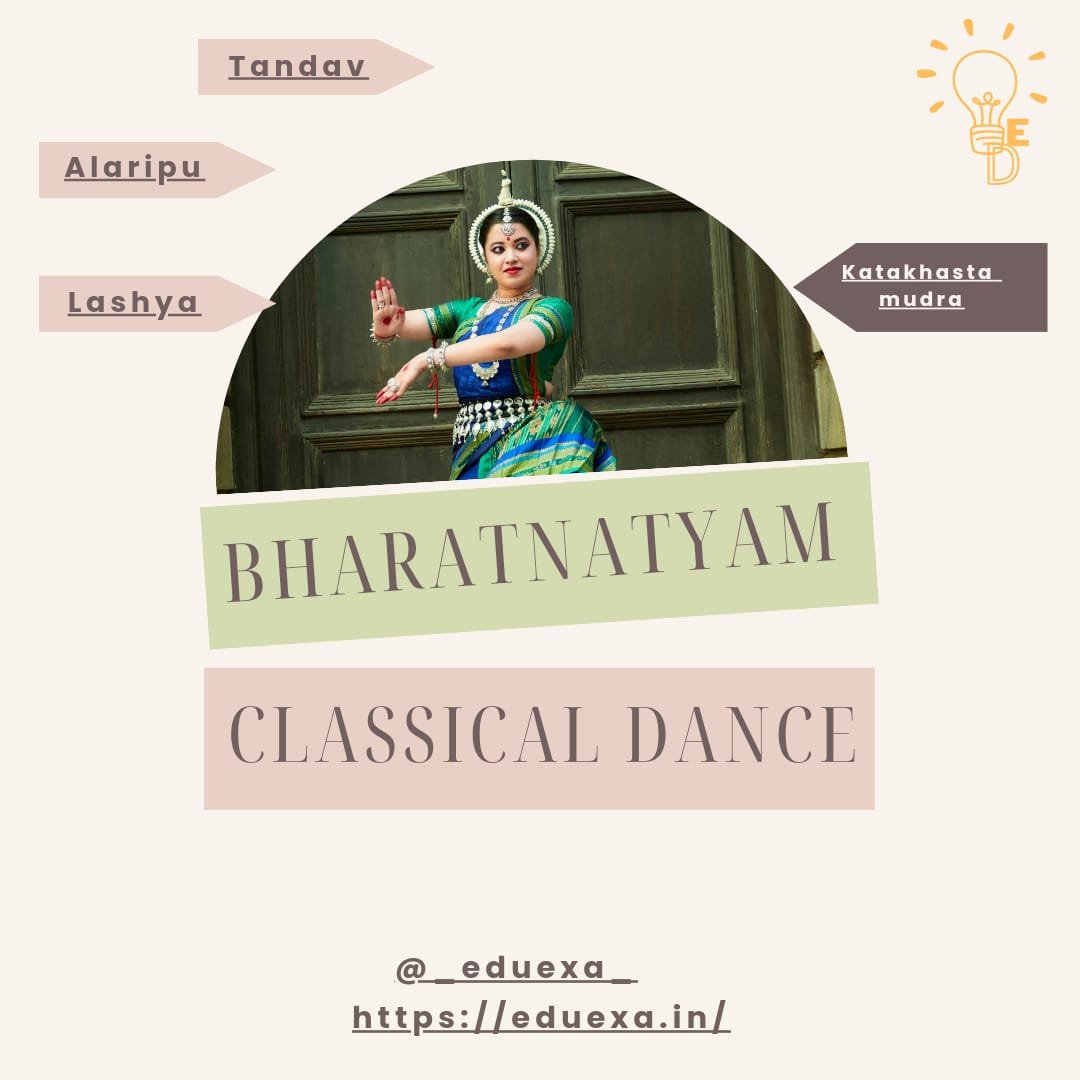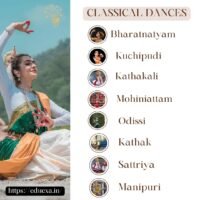Origin and history
Bharatnatyam is also known as Tanjore natyam or dashiyattam. It derives its name from Bharatmuni. It is also called Bhava, Raga & Tala natyam which means it is a dance of expression, melody and rhythm. The origin of Bharat natyam is based on the devadasi system. This system and the dance form dates back to 2000 years ago. As per devadasi system, young girls were donated to temples as a part of worship and these girls dedicated their life to that temple by dancing for their lifetime. This system was highly criticised due to it being exploitative and immoral. As such the devadasi system was banned. It further led to decline of dance form. In this scenario a freedom fighter E Krishna Iyer revived the dance form without any system. Later Rukmini devi Arundale through her performances gave global recognition to Bharatnatyam.
Read about other folk dances of India Here.
Features
Some of the feature of Bharatnatyam are as follows
- Bharatnatyam is often referred to as the ‘fire dance’, as it is the manifestation of fire in the human body. Most of the movements in Bharatnatyam resemble to that of a dancing flame.
- In this dance form, equal emphasis is given on both the Tandava and Lasya aspects of dance, with major emphasis on ‘mudras’.
- One of the principal mudras is ‘Katakamukha Hasta’ in which three fingers are joined to symbolise ‘Om’.
- In a Bharatnatyam recital, the knees are mostly bent and the weight is equally distributed across both the feet.
- It is also characterised by the ‘Ekcharya lasyam’ style in which a single dancer plays different roles.
- During the performance, Mantra recitation is often accompanied which is recited by Nattuvanar or who is known as Nattuvanar.
- Carnatic classical music is used during the performance.
- It originally started as a dance form preserved for women but later men also started performing it.
- It is mostly performed as a group dance but solo dances are also performed.
Steps performed
- Alarippu – It refers to invocation of god to seek his blessings
- Jatiswaram – It is pure dance movement
- Shabdam – Beginning of abhinaya (expression) in the dance starts in this step
- Varnam – It tends to elaborate the expression
- Padam – Mastery in Abhinaya
- Jawali – energetic performance on short Love lyrics
- Thillana – It is the concluding stage. Joyous and exuberant movement symbolises temporary salvation.
Famous exponents of Bharatnatyam
Ragini devi, BalaSaraswati, Yamini Krishnamurthy, Padma subramaniam, Mrinalini sarabhai, Mallika Sarabhai, Alarmel Velli, Meenakshi Sundaram Pillai, Leela Samson, Shanta Dhananjayan/VP Dhananjayan, Sonal Mansingh
Note :- Rukmani devi Arundale is the founder of Kalakshetra school.
Previous Year Question
Bharatnatyam and Kuchipudi dancer Yamini Krishnamurthy was awarded which of the following awards in 2016? (Ssc cgl 2022)
Answer- Padma Vibhushan



